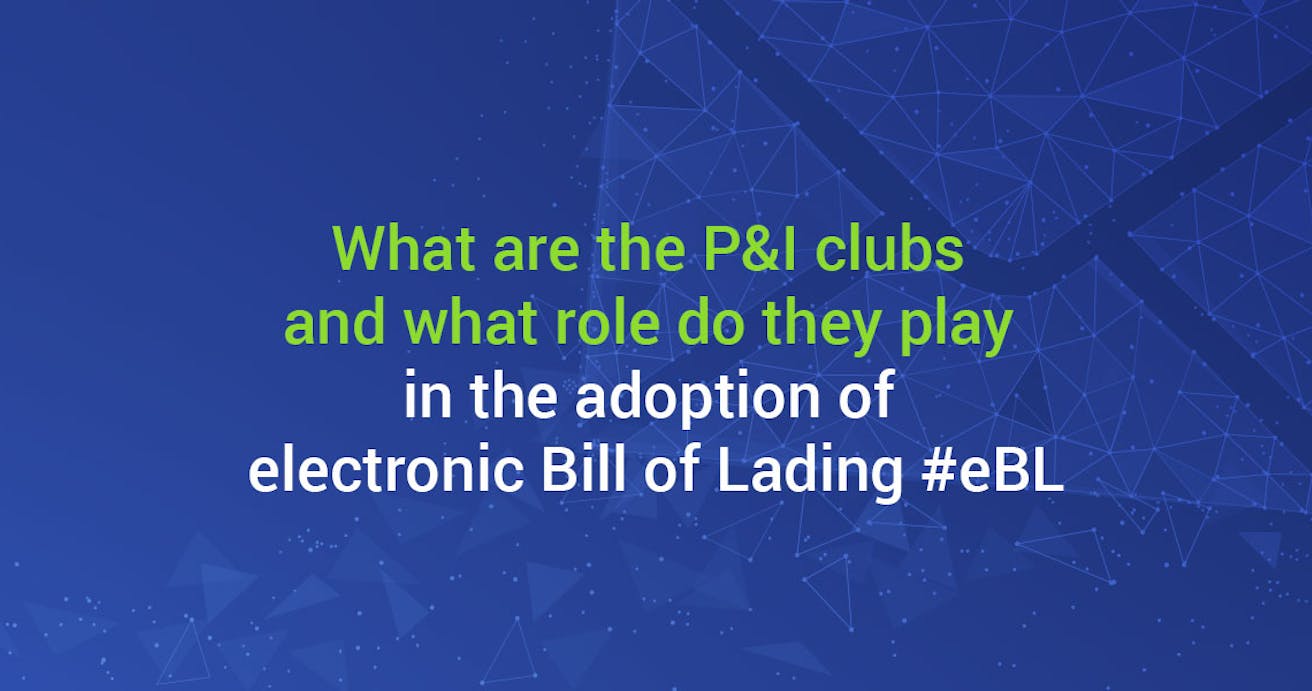
What are the P&I clubs and what role do they play in the adoption of electronic Bill of Lading #eBL
One of the most important moments in the business development of CargoX and its CargoX Platform for Blockchain Document Transfer (BDT) was the approval by the International Group of Protection & Indemnity Clubs back in February 2020. So, what does the IGP&I actually do?
The IGP&I today consists of thirteen clubs that shipowners, operators, freight forwarders, and warehouse operators can join to mutually provide insurance, information, and representation for various risks in maritime shipping, where traditional maritime insurers of cargo, ships, and equipment do not offer coverage.
Through the unique Group structure, the member Clubs, while remaining individually competitive, share between them their large loss exposures, and also share their respective knowledge and expertise on matters relating to shipowners’ liabilities and the insurance and reinsurance of such liabilities.
IGP&I’s endorsement of electronic Bill of Lading technology
It was the IGP&I that gave formal approval to the first digital platforms for electronic Bill of Lading transfers and their use in global trade and recognized the technology as trustworthy for the most important documents in global trade.
90% of the world’s goods are transported by sea.
The first three platforms that were approved all utilized classic client-server architecture: Bolero, essDOCS, and e-Title™ (later acquired by R3). While market adoption was slow and global trade persisted to rely on paper documents and courier services, a new generation of providers had developed their technology. In 2019 and 2020 IGP&I approved three new providers who utilized blockchain technology to advance the security and trustworthiness of document transfer channels, while also emphasizing the decentralized nature of electronic Bill of Lading processing – these were edoxOnline, Wave, the CargoX Platform; and TradeLens was added in 2021.
A very brief history
Historically, P&I clubs were established as shipowner cooperatives in response to the rigid insurance provisions of maritime insurance companies. Probably the first such protection association, the Shipowner’s Mutual Protection Society, was formed in 1855 to provide coverage for cases where insurers did not compensate ship passengers for damages – and in 1874 the risk liability for cargo was added for the first time.
How does it work?
The top 13 P&I clubs insure more than 90% of the world’s ocean-going tonnage and over 95% of ocean-going tankers.
Every member of a P&I club pays a sum that is added to a pool and used for paying damages during the year according to the pooling agreements. If the pool is exhausted during the year because of payouts, members are called upon to pay additional sums into the pool – and if funds remain in the pool at the end of the year, members can contribute less in the coming years.
Trends for 2022
IGP&I Chair Paul Jennings and Group CEO Nick Shaw have recently discussed the Group’s activities over the last 6 months, including a review of claim trends, current, and future challenges, and how the Group can share collective expertise on marine liability issues, furthering global trade.
VIDEO: https://www.youtube.com/watch?v=Xq6XUYilwSA
The key messages include no marked increase in the number of pool claims, the importance of maintaining high levels of P&I liability cover to support global shipping, and the long-term relationship with the reinsurance markets.
They outline how the Group is able to share collective expertise from all 13 Group Clubs on marine P&I liability issues to assist all Club shipowner members and help to facilitate global trade.
VIDEO: https://www.youtube.com/watch?v=Glca-B0F-ck
In the end, they outline current and future challenges – ESG, safety, the move to new fuels, and the risks of regional legislations.
VIDEO: https://www.youtube.com/watch?v=7PSdixEAVz8
In December 2021 the IGP&I published its international group pooling and GXL reinsurance contract structure for 2022 – a summary is available in this new release.
Read more:
Annual summary videos 2021 - IGP&I Chair Paul Jennings and CEO Nick Shaw